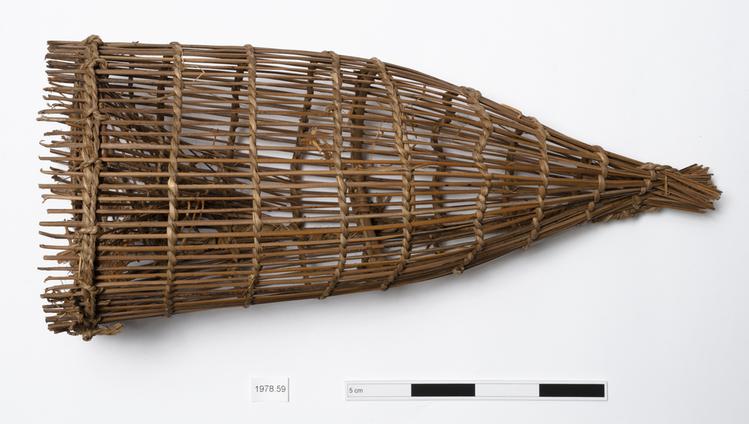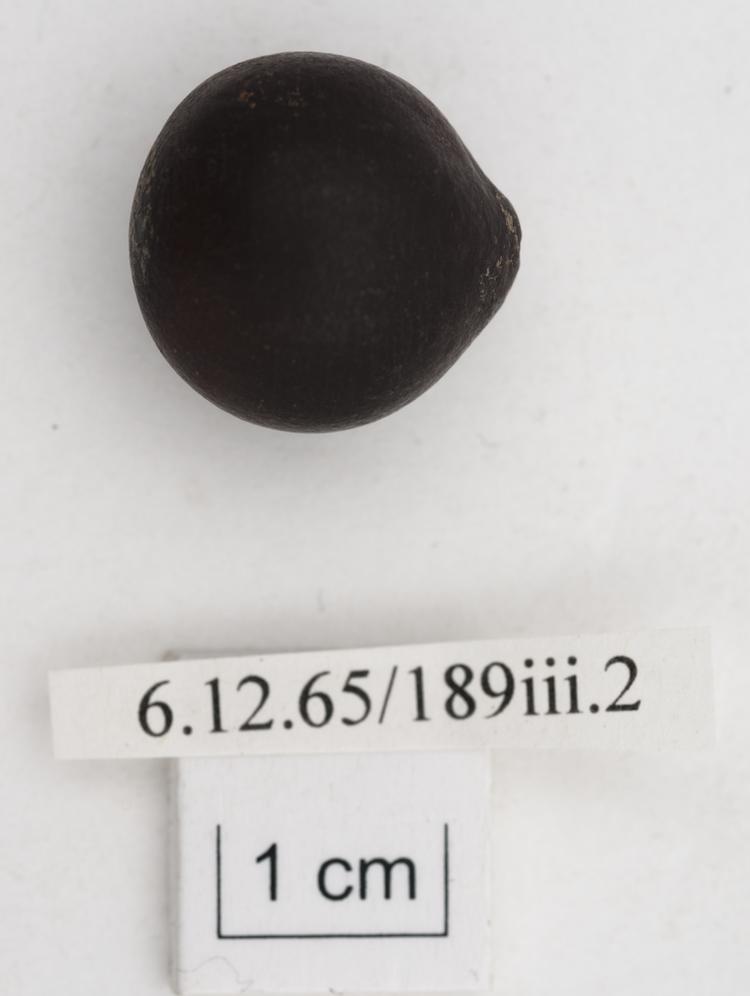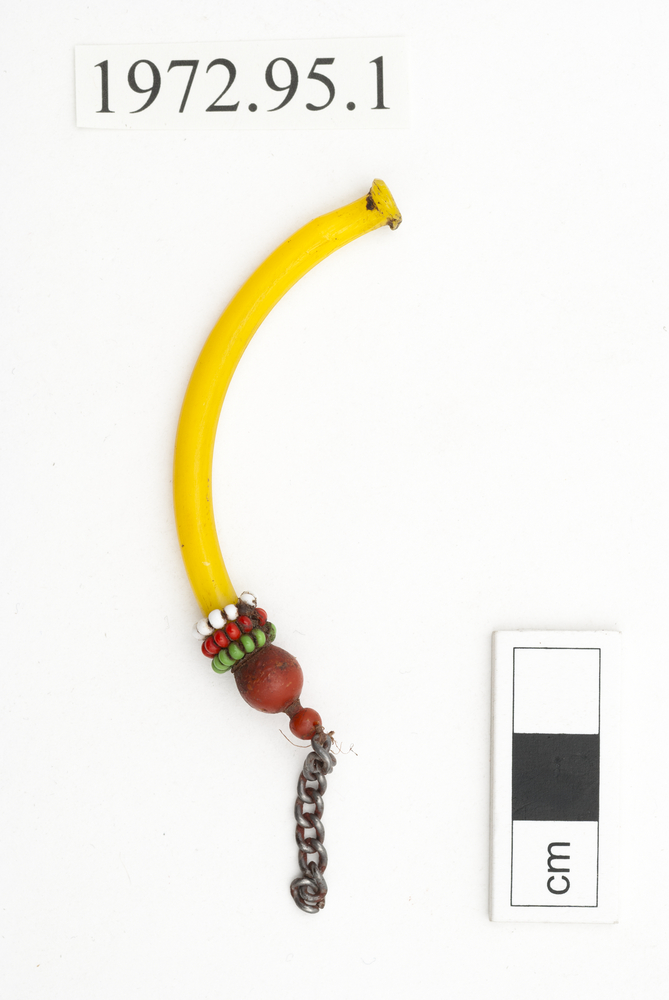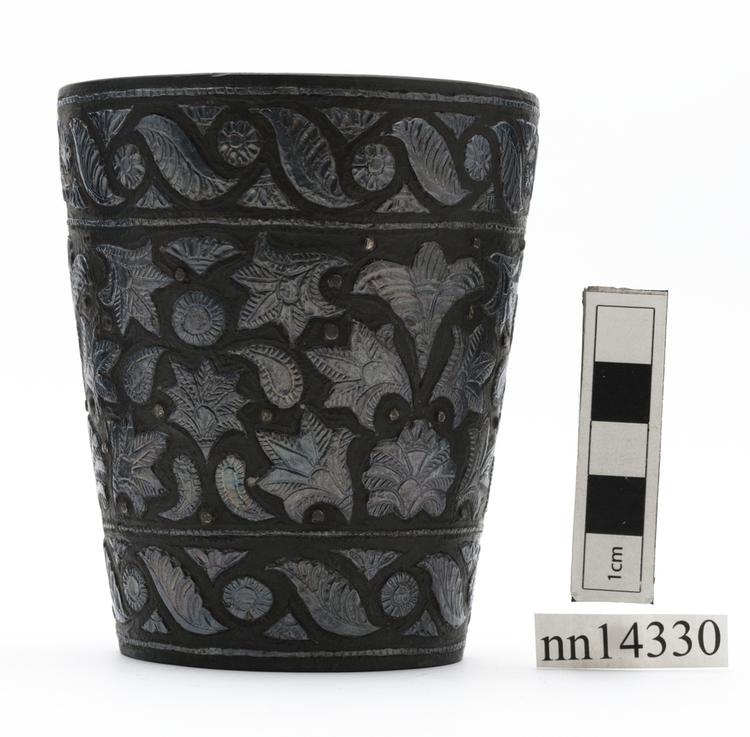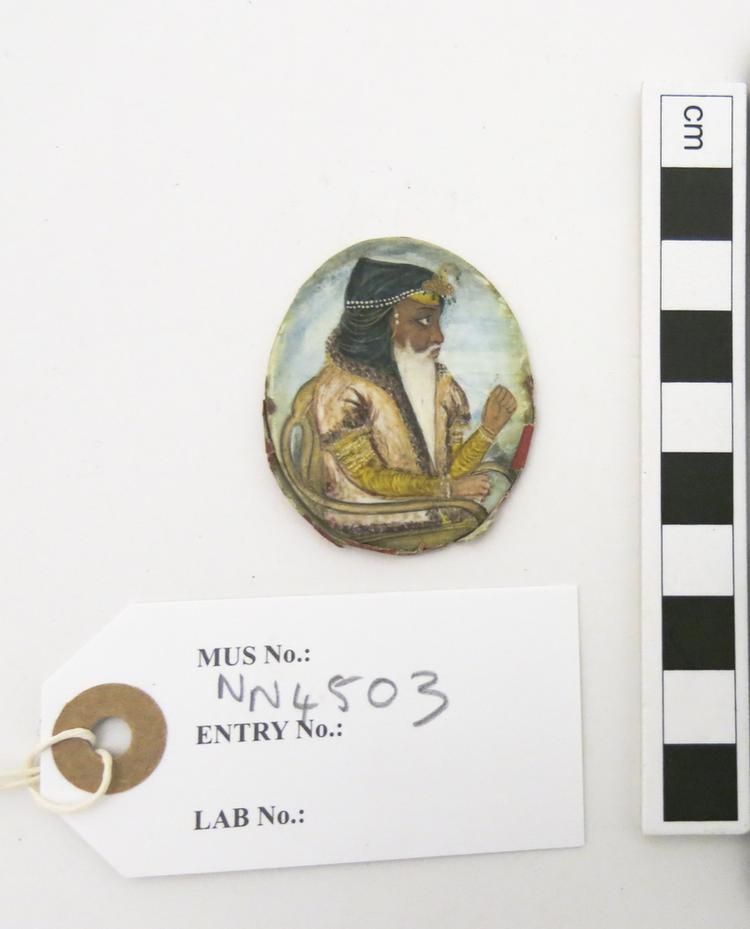
Miniature painting of Maharaja Ranjit Singh (1780–1839), the founder of the Sikh Empire, wearing a jewelled sarpech (crest) in his Kashmir green turban, a large pair of looped earrings and a fur-lined coat. He is seated on a ‘Sikh’ chair (named as such due to the loop in the arm where it met the backrest). As a child, Ranjit Singh lost an eye and suffered facial scarring from smallpox. The artist here has shied away from depicting these well-known physical features. Gouache (possibly heightened with gold) on ivory.
With innate intelligence, bravery and cunning, a young one-eyed Sikh warrior, Ranjit Singh, consolidated the warring confederacies to form a united Sikh kingdom. Though diminutive in stature, Ranjit Singh possessed a unique mix of bravery, ruthless determination and keen intelligence to match his ambitions. Though unlettered, he forged a secular kingdom that held his British and Afghan neighbours at bay for four decades. His first major conquest came in 1799, aged just 19, when the gates of Lahore – Punjab’s ancient capital – were opened to him. Two years later, he established himself as maharaja (‘great king’) of the Sikhs. Not long after he wrested control of Amritsar, the city of the Harmandir Sahib (Golden Temple), the holiest of holy Sikh sites. At the height of his power Ranjit Singh was respected and feared as 'Sher-e-Punjab', the Lion of a Punjab that extended across its vast plains from the Khyber Pass to the borders of Tibet, with its southern boundary bordering British India. In this typical portrait, Ranjit Singh wears a jewelled sarpech (crest) in his Kashmir green turban, a large pair of looped earrings and a fur-lined coat. He is seated on a ‘Sikh’ chair (named as such due to the loop in the arm where it met the backrest). As a child, Ranjit Singh lost an eye and suffered facial scarring from smallpox. The artist here has shied away from depicting these well-known physical features. The painting can be dated to around 1850-60 and was probably completed either at Lahore or Delhi. Dignitaries, local rulers and colourful characters were standard subjects for ‘Company paintings’ in the Punjab. Their principal customers were Europeans living and working in the India subcontinent.



